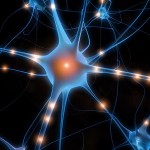 What are stem cells?
What are stem cells?
Paul Kincade, Ph.D.
Cells are the basic building blocks in our bodies, and we have over 500 distinct types. Some cells last for our entire lives, and are difficult to replace if lost or damaged by disease. Examples are those that make up the heart and most of the brain. Other cells are designed to wear out quickly and are constantly replaced by “stem cells” present in adult tissues. Examples are cells in blood, skin and the lining of the intestine. Adult stem cells are vital to our health and not controversial. Some of them have been used for years to save lives.
The Oklahoma Center for Adult Stem Cell Research supports scientists who work in several areas. Some of them study naturally occurring stem cells with the goal of learning how to better use them for tissue repair. Also, the same stem cells that keep us healthy sometimes turn into cancer cells and a better understanding of that process is very important. Still other scientists are learning how to “make” stem cells from adult tissues.
There are different types of adult stem cells, but all have two things in common. They can divide to make exact copies of themselves, or turn into at least one kind of tissue. For example, thousands of people with diseases involving blood cells have been successfully treated with stem cell transplants. That is commonly called “bone marrow transplantation” because most blood stem cells live within bones. However, stem cells for blood normally cannot make skin. The naturally occurring stem cells that reside in skin cannot make blood cells, but have been used successfully to repair wounds.
A Nobel Prize was recently awarded for the discovery that most cells in the body can be engineered to become “induced pluripotent stem cells”or iPSC. Although still far from being useful for clinical treatment, this new technology makes it possible to turn any cell into other cell types, including ones that are not normally replaced. This has opened a new field known as “regenerative medicine”.
Advances in stem cell research have caused a great deal of excitement and hope for incurable diseases. However, there has also been a lot of confusion and controversy. Studies with mice and later humans led to the discovery of “embryonic stem cells” or ESC. When grown in a test tube, ESC can be directed to become beating heart, nerve, pancreas or virtually any other cells. However, current research is focused on use of naturally occurring or artificially created adult stem cells. We are not aware of any laboratory studies or treatments in Oklahoma that involve human embryonic cells.
It is extremely important to determine whether a new stem cell treatment is safe and effective. This is a very time consuming and expensive process that must be conducted with FDA approved procedures and safeguards. Patients who participate in such clinical trials generally are not asked to pay anything. Meanwhile, many clinics now offer expensive treatments that lack sound scientific basis and are not consider standard care. Anyone considering them should ask a series of questions found on this web site: www.OCASCR.org. OCASCR may be able to direct you to additional resources: (405) 271-7473.
The pace of discovery in this field is unprecedented and basic knowledge about stem cells is rapidly accumulating. Therefore, we are certain that new therapies will be developed for many diseases that are currently incurable.
December 2010
Spinal Cord Injury and Stem Cells